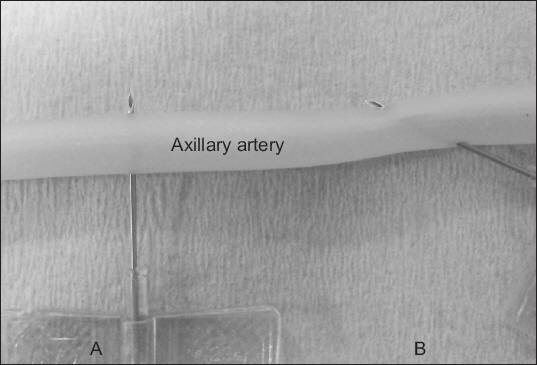Erratum: Effect of needle approach to the axillary artery on transarterial axillary brachial plexus block quality
Article information
Anesth Pain Med 2017;12:357-362
https://doi.org/10.17085/apm.2017.12.4.357
Figure 1 was printed with incorrect text. In the Figure, “Radial artery” should be corrected to “Axillary artery.”

Perpendicular approach group (PA group) versus the shallow needle approach group (SA group). When the scalp vein needle (23 G, 3/4’) was advanced into the axillary artery, the needle was directed perpendicular to the axillary artery in the PA group (A), whereas in the SA group, a shallow needle approach to the axillary artery was used (B).
The corrected figure is shown below.